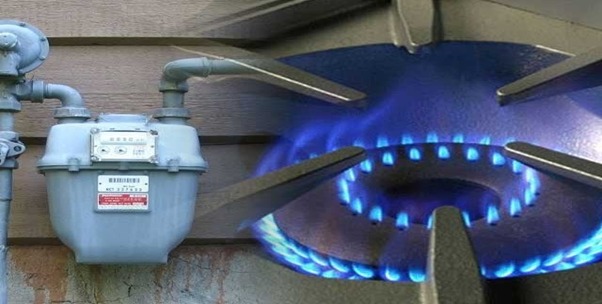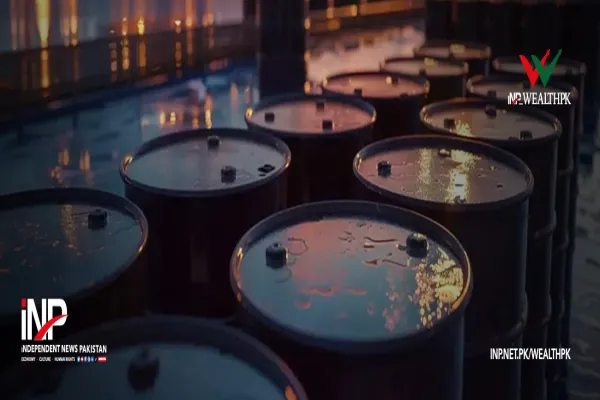i INP-WEALTHPK
By Farooq Awan
Pakistan is facing a growing mismatch between its long-term liquefied natural gas (LNG) import commitments and domestic demand, leading to costly diversions of surplus LNG to household consumers.

The country’s rigid take-or-pay contracts with Qatar and Italy’s ENI have outpaced actual gas consumption from the power, fertilizer, and industrial sectors, leaving an estimated 28 unused cargoes per year and adding strain to the national transmission network. According to the Pakistan Energy Market Review 2025 by Renewables First, Pakistan is bound to import 120 LNG cargoes annually —108 from Qatar under two government-to-government sales and purchase agreements, and 12 from ENI under a 15-year contract. These long-term obligations, originally designed to ensure energy security during peak demand years, have now become a financial liability as industrial and power sector demand weakens amid high tariffs, reduced production, and affordability constraints.
The report said that the country’s gas demand has contracted significantly since 2022 due to a combination of macroeconomic slowdown, declining industrial output, and reduced electricity generation from gas-fired plants. As a result, imported LNG volumes under take-or-pay contracts have exceeded domestic consumption requirements, forcing gas utilities to redirect surplus regasified LNG (RLNG) into household pipelines operated by Sui Northern Gas Pipelines Limited (SNGPL) and Sui Southern Gas Company Limited (SSGC).
This diversion has increased the system’s line-pack pressure gas stored within the transmission network to above 5.1 billion cubic feet, which can threaten network stability if not managed carefully. The practice, while preventing contractual penalties and maintaining pressure equilibrium, has imposed significant financial costs on consumers and the government. RLNG is substantially more expensive than indigenous gas and is sold to domestic users at uniform rates rather than the traditional slab-based pricing model.
The review noted that as of September 2025, RLNG was supplied at rates of 12.01 dollars per million British thermal units (MMBTU) by SNGPL and 11.01 dollars per MMBTU by SSGC, equivalent to roughly Rs3,300 per MMBTU. In contrast, conventional piped gas from local fields costs less than half that amount. The price disparity has inflated household gas bills, reduced affordability, and increased subsidy requirements to protect low-income users.
The report warned that this imbalance threatens the financial stability of gas utilities already burdened by circular debt, which stood at Rs3.2 trillion by March 2025. Under the current pricing framework, SNGPL and SSGC are unable to recover the full cost of imported gas from consumers, leading to mounting receivables from the power sector and delayed payments to LNG importers such as Pakistan State Oil (PSO) and Pakistan LNG Limited (PLL).
The surplus LNG problem is compounded by declining domestic production and rising long-term import obligations. Indigenous gas output fell 4 percent year-on-year in FY24 to an average of 3,117 million cubic feet per day, while LNG imports increased 13 percent to balance supply. However, demand for gas-fired power generation and industrial use fell simultaneously, creating a widening gap between contractual inflows and actual offtake. The report projected that by 2030, unused LNG cargoes could accumulate to 177 if demand continues to stagnate and contracts remain unchanged.
Experts said that the mismatch between rigid import obligations and fluctuating domestic demand underscores the need for urgent policy recalibration. Pakistan’s LNG portfolio, heavily indexed to Brent crude prices, leaves the country vulnerable to global market volatility. Delivered ex-ship (DES) prices averaged between 11 and 13 dollars per MMBTU during 2024, while occasional spikes in Brent prices pushed landed costs even higher. The resulting fiscal burden has been aggravated by rupee depreciation and the absence of flexible contract renegotiation clauses.
The review suggested that deferring some LNG cargoes could offer short-term relief, but such measures would not address the underlying structural imbalance. Long-term reforms are needed to align contract volumes with realistic demand forecasts and to diversify the supply mix through renewable energy and domestic exploration. Expanding solar, hydel, and wind capacity could ease the pressure on gas imports and gradually reduce the foreign exchange outflow tied to LNG payments.
The report also highlighted the social implications of rising RLNG dependence for households. With urban consumers already facing high electricity and gas tariffs, the inclusion of expensive imported gas in the domestic mix risks further reducing affordability. Many households have begun adopting solar water heaters, electric stoves, and energy-efficient appliances to lower monthly expenses. This behavioral shift, while beneficial in the long run, reflects deepening stress in the conventional gas market.
According to the Pakistan Energy Market Review 2025 by Renewables First, Pakistan’s LNG management strategy requires urgent review. Unless long-term contracts and demand forecasts are revised, continued surplus LNG imports may further strain utility finances and exacerbate the circular debt crisis. The study recommended that the government explore flexible procurement models, strengthen domestic gas exploration, and accelerate renewable energy deployment to gradually replace imported LNG with more sustainable and affordable alternatives.
Credit: INP-WealthPk









